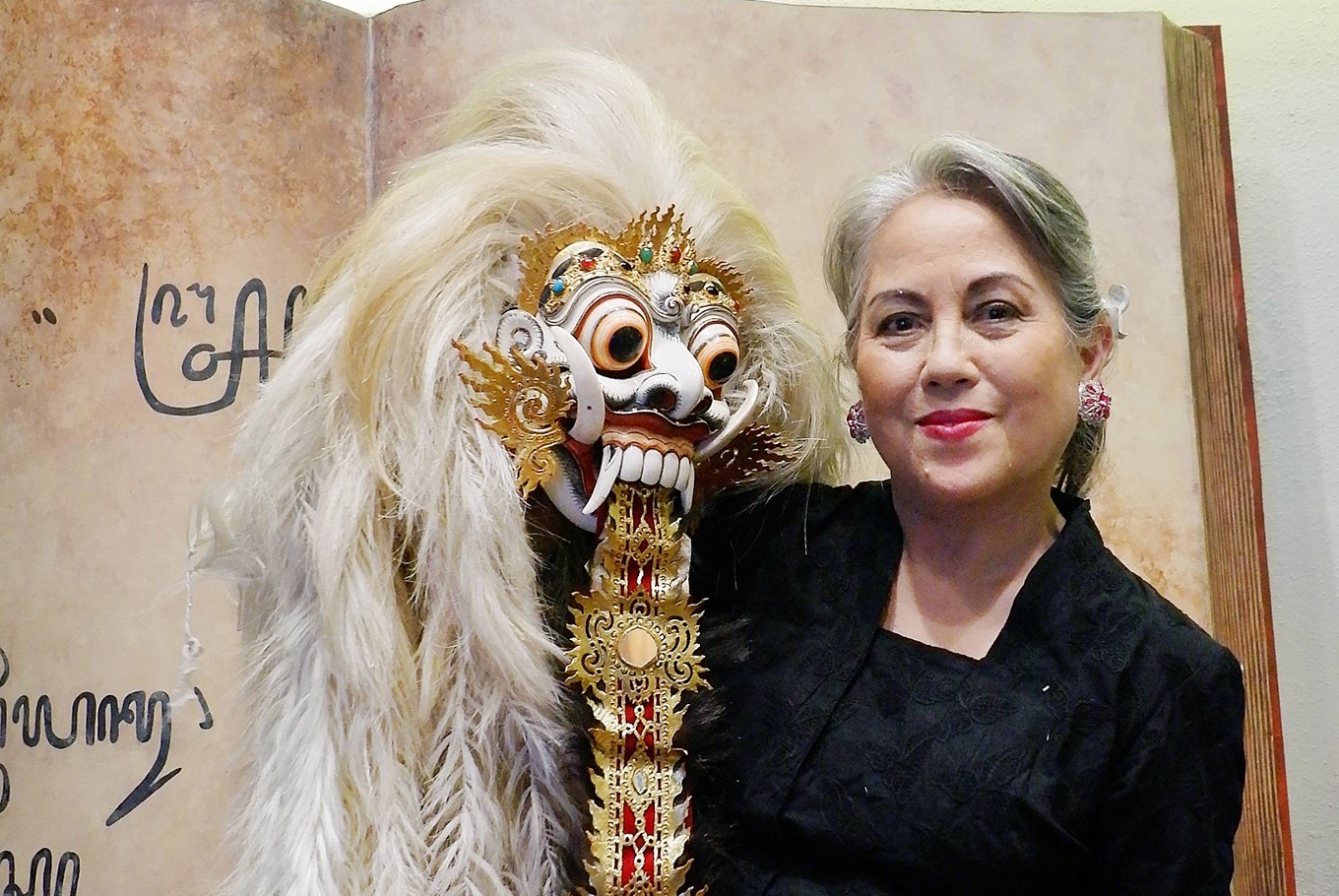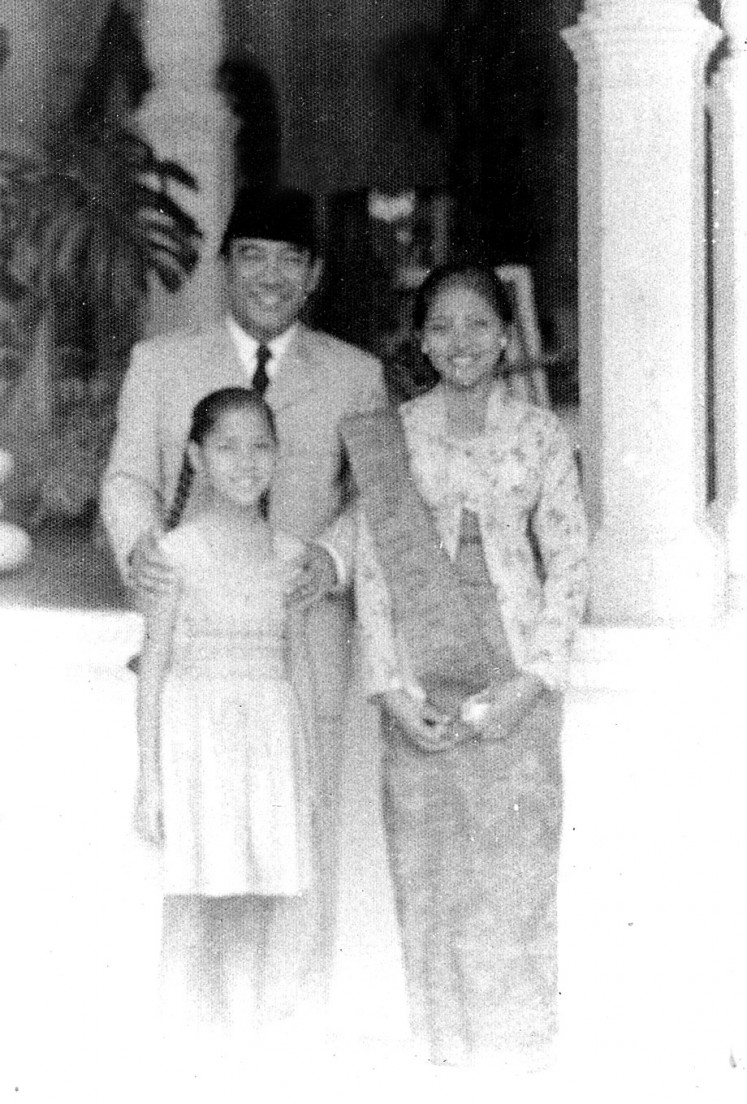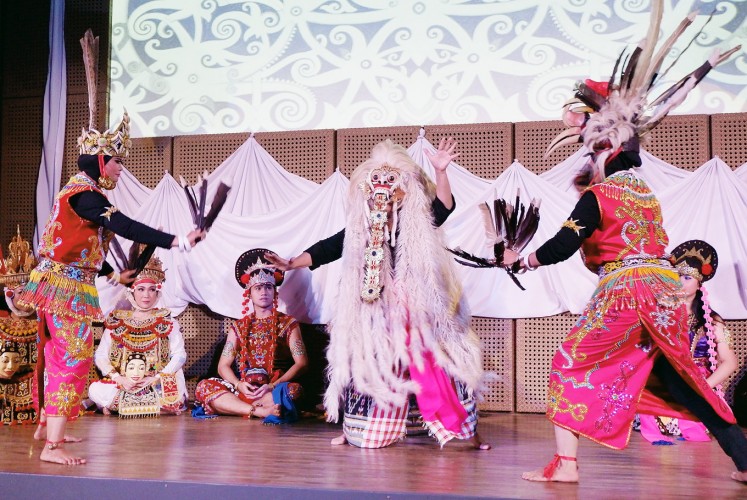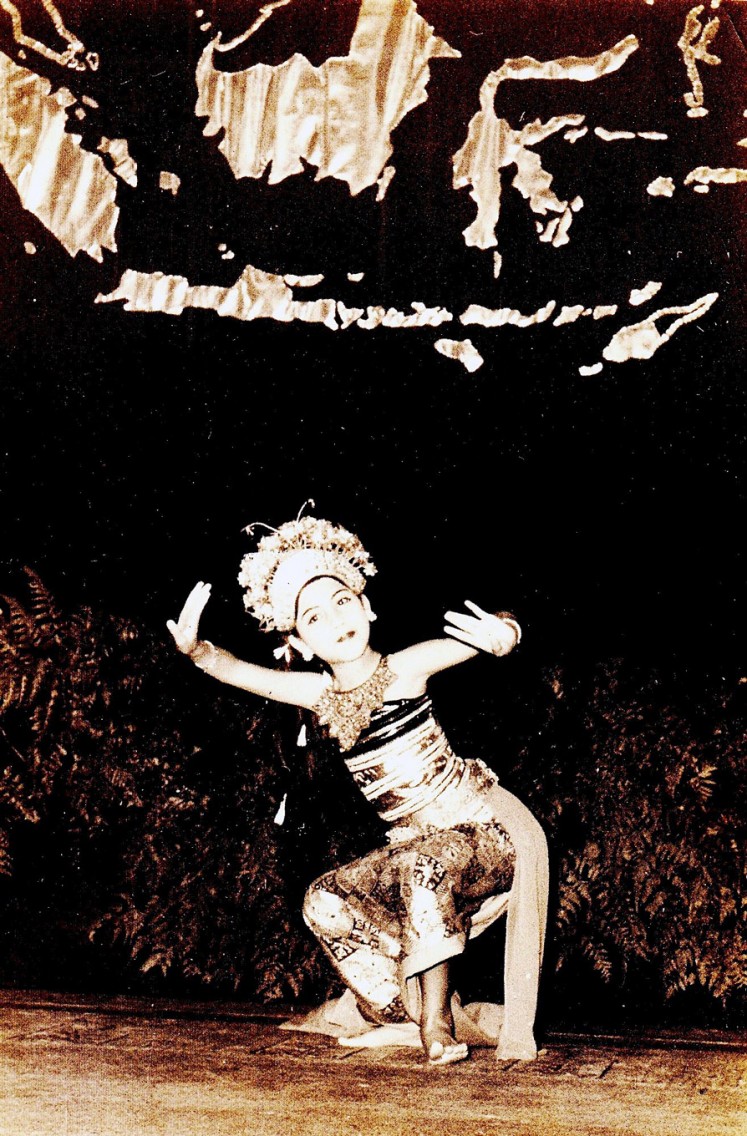Popular Reads
Top Results
Can't find what you're looking for?
View all search resultsPopular Reads
Top Results
Can't find what you're looking for?
View all search resultsAyu Bulantrisna Djelantik: Dances till the world ends
For Balinese dance maestro Ayu Bulantrisna Djelantik, life is about prayer, love and dance.
Change text size
Gift Premium Articles
to Anyone
Ayu Bulantrisna Djelantik, 70, is compiling a photographic biography about her dancing career spanning over half a century.
While working on the book, she admits her only regret: “Why didn’t I ask for the autograph of Sukarno?”
Growing up in Peliatan village, Ubud, Ayu was one of president Sukarno’s most beloved child dancers.
As a child, she was often invited to dance at Tampaksiring Palace in Bali, especially when the president hosted state guests, such as Thailand’s revered king Bhumibol Adulyadej, Vietnamese prime minister Ho Chi Minh and emperor of Japan Hirohito.
“The title of the book is Dance is Healing. Because of dancing, I can get through the storms in my life,” she said.
Ayu is a maestro of the Legong Dance, a Balinese classic dance that, according to her, is very poetic.
She comes from a family of artists. Her grandfather, Anak Agung Anglurah Djelantik, was the last king of Karangasem and he obliged his grandchildren to learn to dance from an early age.
“When I was 6, I realized I really liked to dance and I could master dance moves quickly. At the age of 7, I had already created my own dance moves,” Ayu said.
Her mentors were Anak Agung Mandera and Gusti Made Sengog, who were the first generation of Legong dancers.
President's favorite: Ayu (left) poses with president Sukarno. (Ayu Bulantrisna Djelantik/File)People in Peliatan noticed that Ayu was endowed with exceptional abilities to dance. This news was heard by Sukarno, who later invited her to show her moves.
She recalled that the president treated his state guests and dancers equally. After performing, they would be approached by him. He then shook their hands one by one.
When serving his state guests, Sukarno invited his dancers to join him and they sat at the same table.
“We talked about many things. We were really appreciated,”
“For him, dance was not just a supplement.”
Like her grandfather, Sukarno was also a performing art lover who wanted his children to learn to dance from an early age.
“I was really close with his children, especially Guruh Soekarno Putra, because he learned how to dance in my village,” she recalled.
When Ho Chi Minh made a state visit in 1959, she was at Merdeka Palace to accompany the president’s daughters — Megawati, Sukmawati and Rachmawati — to dance.
“They performed the Farmer Dance,” she said.
“Megawati [current chairwoman of the ruling Indonesian Democratic Party of Struggle] was very sweet and beautiful.”
Sukarno’s children often visited Ayu’s house because her father happened to be a doctor at Tampaksiring palace.
In the era of Sukarno, dance was part of his diplomacy. Therefore, he often delegated his favorite dancers, including Ayu, to perform overseas.
In the early 1960s, however, her father would not give her the green light if she only danced in communist countries in a bid to protect her amid geopolitical tension between the Eastern and Western bloc.
“In 1964, I was invited to join a tour to China and North Korea, but my father forbade me from participating. Then, the education minister came to my house, telling him that I would also visit Japan. He then allowed me to go,” she said.
One day, at the Imperial Hotel in Japan, she witnessed moments when Sukarno was accompanied by a geisha, Naoko Nemoto, who later was given the Indonesian name Ratna Sari Dewi Soekarno after becoming his third wife in 1962.
“When watching our performances, she [Ratna] always smiled. She once gave us a present, Japanese face powder,” she said.
Maestro: Ayu Bulantrisna Djelantik (third right) performs at Galeri Indonesia Kaya. (JP/A. Kurniawan Ulung)During the era of president Soeharto, Ayu was often invited to dance at the palace. However, she felt a different atmosphere because dance was merely deemed as entertainment.
When former United States president Bill Clinton was in Jakarta, she was asked to perform the Legong dance. But the duration was cut from 20 minutes to only four minutes, something that disappointed her because the story of her dance was not fully delivered.
After performing, the dancers returned backstage and Soeharto did not greet them.
“I was very disappointed and felt unappreciated,” she said. “But. I could understand him. Maybe he did not have time.”
Ayu once tried to stop dancing, but to no avail. After graduating from high school, she was forbidden by her father to study in Jakarta because he thought that she would be invited to dance at the palace more often.
She then studied at Padjadjaran University’s School of Medicine in Bandung, West Java. However, she was asked to provide dance lessons at educational facilities across the province.
After Ayu married in 1971, she planned to take a hiatus. But, she had to cancel it because she was asked to help found Akademi Seni Tari Indonesia (Indonesian Dance Academy) in Bandung.
“Because they really needed me, I did not have the heart to say no,” she said.
When continuing her studies in Germany, she was still unable to stop dancing because she was frequently asked to dance either by the Indonesian Embassy or by German people.
Carefree: Ayu Bulantrisna Djelantik dances at the Tampaksiring Palace as a child. (Ayu Bulantrisna Djelantik/File)Ayu has two dance schools in Jakarta, Bengkel Tari AyuBulan for professional dancers and LesTari AyuBulan for newbies.
“I want Legong dance to be protected, preserved and developed. This dance is adiluhung [superb] and in the past, it was used by Balinese noblemen to welcome guests,” she said. “To master Legong takes at least two years.”
Ayu was also involved in the success of the government’s efforts to make UNESCO recognize nine Balinese dances, including Legong, as part of the world’s intangible cultural heritage.
In 2012, the Indonesian Museum of Records (MURI) named her the oldest Legong dancer.
She has proven that age is just a number. She is still energetic in her septuagenarian. In October, she and her students danced at auditorium Galeri Indonesia Kaya in Central Jakarta.
“The recipes of staying young are to think positively and to keep smiling despite many failure and disappointment,” the grandmother of four said.














